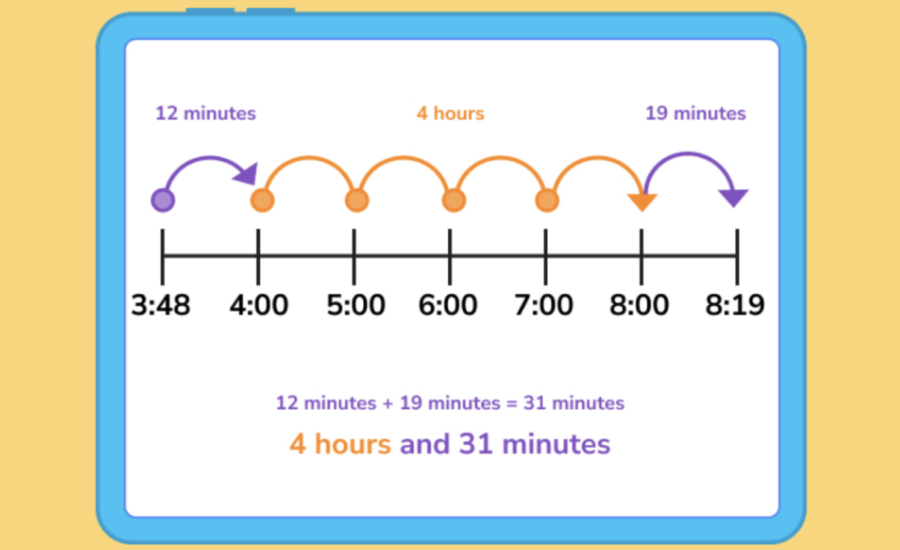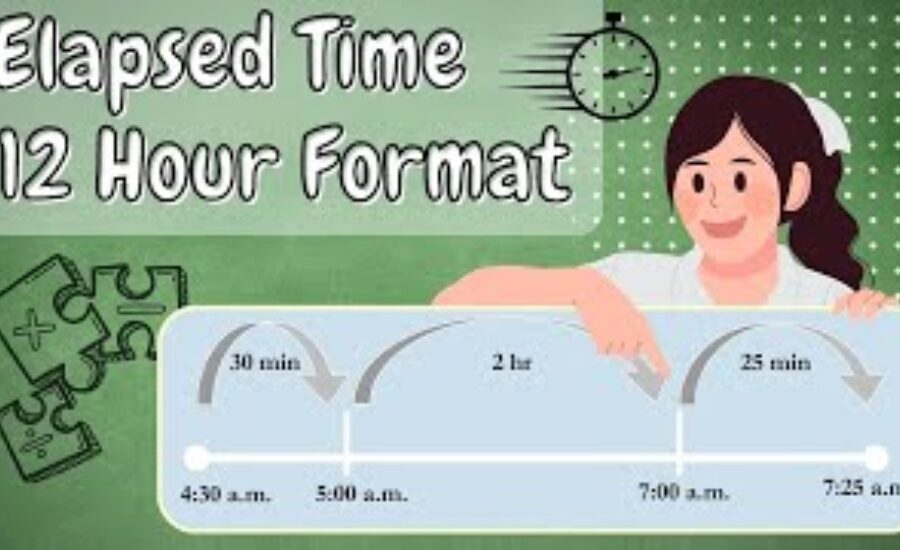Introuction To Elapsed: 01:12:31.52 time foramt what is this mean
In our advanced time of accuracy and proficiency, understanding time designs is vital over businesses such as media generation, program improvement, and information examination. The passed time organize “01:12:31.52” is a idealize illustration of how granular and particular time following can ended up. This article investigates its meaning, applications, and significance in different spaces passed: 01:12:31.52 time foramt what is this mean.
What Does the Organize 01:12:31.52 Represent?
The arrange “01:12:31.52” is an passed time representation utilized to signify a term or maybe than a particular time of day. Each portion of the organize speaks to the following:
Hours (01): The to begin with section implies the number of hours in the term. In this case, it speaks to one hour.
Minutes (12): The moment section demonstrates the minutes, here appearing twelve minutes.
Seconds (31): The third portion measures seconds, highlighting thirty-one seconds.
Milliseconds (52): The last portion means fragmentary seconds, in this case, fifty-two hundredths of a second.
This level of detail is especially valuable in scenarios requiring accuracy, such as competitive sports timing or specialized investigation in engineering.
Applications of the Passed Time Format

1. Sports Timing
One of the most common employments for this organize is in sports competitions. In races like track occasions, swimming, or marathons, the contrast of indeed a hundredth of a moment can decide a victor. Computerized timing frameworks utilize this arrange to guarantee reasonableness and accuracy.
- Example: The Olympic Recreations as often as possible depend on frameworks that record comes about to the closest hundredth of a moment utilizing designs like “01:12:31.52.”
2. Media Production
In video altering and generation, passed time designs offer assistance editors pinpoint particular outlines for accuracy altering. Whether synchronizing sound or cutting clips, this time organize is invaluable.
- Example: A film editor might utilize this arrange to stamp key minutes in a scene, such as 01:12:31.52 to recognize the correct moment and outline to embed a uncommon effect.
3. Program Development
Developers utilize time groups to track execution times for execution examination. This empowers them to distinguish bottlenecks and optimize their code.
- Example: A script preparing huge datasets might log an execution time of 01:12:31.52, which can be analyzed to make strides efficiency.
4. Occasion Tracking
Systems observing long-running forms, such as mechanical operations or logical tests, advantage from point by point time groups. They guarantee exact following of turning points and anomalies.
Example: A research facility try including chemical responses might log times in this arrange to record advance or deviations.
Why Is Millisecond Accuracy Important?
Milliseconds frequently play a basic part in situations where micro-timings impact results. Here are a few examples:
- Gaming: Esports matches depend on response times measured in milliseconds to guarantee reasonableness and competitiveness.
- Scientific Investigate: Molecule material science tests, such as those conducted at CERN, depend on millisecond accuracy to approve findings.
- Financial Exchanging: High-frequency exchanging calculations execute exchanges in divisions of a moment, making exact time designs indispensable.
Converting and Translating the Format
Understanding how to change over and control the “01:12:31.52” arrange is critical for its application. Here’s a step-by-step guide:
Breaking Down the Format
- Total Seconds: Change over the whole length into seconds for simpler calculations. 1×3600 (hours)+12×60 (minutes)+31 (seconds)+0.52 (milliseconds)=4351.52 seconds.1 times 3600 , text{(hours)} + 12 times 60 , text{(minutes)} + 31 , text{(seconds)} + 0.52 , text{(milliseconds)} = 4351.52 , text{seconds.}1×3600(hours)+12×60(minutes)+31(seconds)+0.52(milliseconds)=4351.52seconds.
Back to Hours, Minutes, and Seconds
To revert:
Divide add up to seconds by 3600 to get hours.
Extract remaining seconds and partition by 60 for minutes.
Retain the rest for seconds.
Tools and Innovations for Passed Time Tracking
Several apparatuses can help in capturing and analyzing slipped by time with precision:
Stopwatches and Chronometers: Outlined for milliseconds-level precision, regularly utilized in sports.
- Video Altering Program: Applications like Adobe Debut Master depend on timecodes in this arrange for frame-level editing.
- Coding Libraries: Libraries like Python’s datetime module empower control of such time designs in computer program applications.
Real-World Examples
Broadcasting
Television and radio programs depend on strict timing for sections. Utilizing passed time groups guarantees synchronization with plans and anticipates overruns.
Aviation
Flight recorders (dark boxes) log information in slipped by slipped by: 01:12:31.52 time foramt what is this cruel time groups to archive occurrences. These records are imperative for post-incident analysis.
Elapsed Time Meaning
Elapsed time implies the time that has passed between the begin of the time and the conclusion of the time. For case, if a man begins traveling at 10:30 AM and closes the travel at 12:15 PM, the time passed is the term of his travel, that is, the time between 12:15 PM and 10:30 AM. Passed time is an vital concept as it makes a difference us to learn to examined the time on a clock and degree the time taken for an occasion to happen. Let us presently get it the equation to calculate the passed time in the another section.
Elapsed Time Formula
We can calculate the slipped by time by subtracting the time at the conclusion of the occasion and the time at the starting of the occasion. We subtract the hours and the minutes independently. We can type in time in two groups, one is the 12-hour organize where we utilize AM and PM, and another is the 24-hour arrange where the time is given in hours and minutes. For case, if an occasion begins at 16:40 and closes at 23:50, at that point the passed time can be decided as,
Hours = 23 – 16 = 7, Minutes = 50 – 40 = 10. So, the passed time is 7 hours 10 minutes. Here the time was given in the 24-hour format.
We can disentangle the issues by breaking the time into 1-hour holes and at that point calculating. We will unravel a few cases in the up and coming segments to get it this way better. So, the equation to calculate the passed time is given by,
Elapsed Time = Conclusion Time – Begin Time
Elapsed Time on a Number Line
In this area, we will learn to calculate the slipped by time on a number line. To do so, we separate the number line into rise to interims of time and at that point bounce from the begin time to the conclusion time to calculate the passed time. Let us consider an illustration to get it this strategy superior. A man goes on a excursion in his car. He begins driving the car at 1:30 PM and come to the goal at 6:10 PM. We require to discover the slipped by time of the travel. Let us draw a number line and check the time at 1-hour interims and at that point in the final hour, we partition it into 10 minutes intervals.
Estimated Passed Time
The evaluated passed time is an estimation of the time that is required for an occasion to happen. In basic words, we can say that it is the time that will be required for an occasion (that has not happened however) to be completed. Assessed slipped by time is by and large utilized for flight terms. Some time recently the take-off of a flight, the travelers are told that the flight will arrive in x hours and y minutes. Since we cannot be beyond any doubt of the correct length as the occasion has not happened however, we consider it as the evaluated passed time which is assessed concurring to past encounters.
Facts:
- Elapsed Time Format: The format “01:12:31.52” represents elapsed time, where:
- 01: 1 hour
- 12: 12 minutes
- 31: 31 seconds
- 52: 52 milliseconds (1/100th of a second)
- Applications:
- Sports: Used to record accurate race times in events like swimming and track competitions.
- Media Production: Essential for synchronizing sound and video editing, where precise timing is critical.
- Program Development: Developers use elapsed time to analyze execution performance and identify inefficiencies.
- Event Tracking: Used in long-term processes like chemical reactions or mechanical operations to monitor progress.
- Importance of Milliseconds: Millisecond accuracy is crucial in fields like esports, scientific research, and high-frequency financial trading, where even the smallest time differences can influence outcomes.
- Time Conversion: Converting elapsed time into total seconds and back to hours, minutes, and seconds is a common method for simplifying time calculations.
- Tools for Tracking:
- Stopwatches and Chronometers: Used for measuring time in sports.
- Video Editing Software: Helps pinpoint specific frames using precise time codes.
- Programming Libraries: Tools like Python’s datetime module are used to manipulate and analyze time data in applications.
- Real-World Examples:
- Broadcasting: Ensures synchronization of television and radio programs.
- Aviation: Flight recorders (black boxes) log elapsed time for post-incident analysis.
- Elapsed Time Calculation: The formula to calculate elapsed time is:
- Elapsed Time = End Time – Start Time
Summary:
The time format “01:12:31.52” is a precise way to represent elapsed time, including hours, minutes, seconds, and milliseconds. It is commonly used in fields that require exact timing, such as sports, media production, programming, and event tracking. Millisecond precision is vital in high-stakes environments like esports and scientific research. Converting elapsed time into total seconds and back to hours, minutes, and seconds is often necessary for simplification. Tools like chronometers, video editing software, and programming libraries help capture and analyze this precise time format. The significance of elapsed time is further demonstrated in real-world scenarios, including broadcasting and aviation, where accurate timing ensures synchronization and safety.
FAQs:
- What does the time format “01:12:31.52” represent?
- It represents 1 hour, 12 minutes, 31 seconds, and 52 milliseconds of elapsed time.
- How is elapsed time used in sports?
- Elapsed time is used to measure race results to the hundredth of a second, determining winners in sports like swimming and track events.
- Why are milliseconds important?
- Millisecond accuracy is crucial in fields like esports, scientific research, and financial trading, where even small time differences can impact outcomes.
- How do you convert “01:12:31.52” to total seconds?
- Convert the time by calculating: (1 hour × 3600 seconds) + (12 minutes × 60 seconds) + 31 seconds + 0.52 milliseconds = 4351.52 seconds.
- What tools are used to track elapsed time accurately?
- Tools include stopwatches, chronometers, video editing software, and programming libraries like Python’s datetime module for precise time analysis.
- How do you calculate elapsed time?
- Subtract the start time from the end time. For example, if an event starts at 16:40 and ends at 23:50, the elapsed time is 7 hours and 10 minutes.
- How is elapsed time used in broadcasting?
- Elapsed time ensures that television and radio programs run on schedule, avoiding overruns and keeping content synchronized.
Read More information About that information At Provibes
